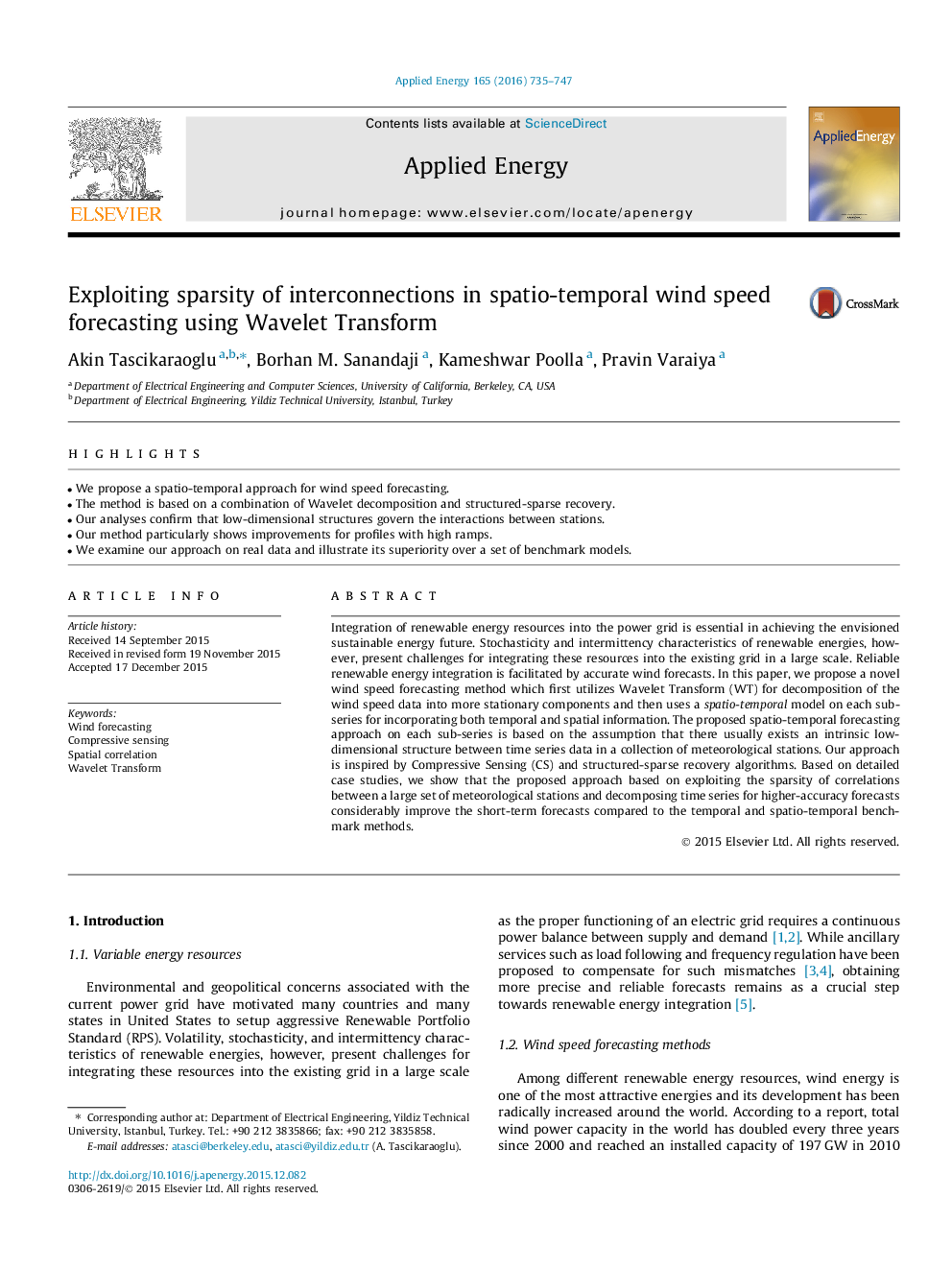| Article ID | Journal | Published Year | Pages | File Type |
|---|---|---|---|---|
| 6684067 | Applied Energy | 2016 | 13 Pages |
Abstract
Integration of renewable energy resources into the power grid is essential in achieving the envisioned sustainable energy future. Stochasticity and intermittency characteristics of renewable energies, however, present challenges for integrating these resources into the existing grid in a large scale. Reliable renewable energy integration is facilitated by accurate wind forecasts. In this paper, we propose a novel wind speed forecasting method which first utilizes Wavelet Transform (WT) for decomposition of the wind speed data into more stationary components and then uses a spatio-temporal model on each sub-series for incorporating both temporal and spatial information. The proposed spatio-temporal forecasting approach on each sub-series is based on the assumption that there usually exists an intrinsic low-dimensional structure between time series data in a collection of meteorological stations. Our approach is inspired by Compressive Sensing (CS) and structured-sparse recovery algorithms. Based on detailed case studies, we show that the proposed approach based on exploiting the sparsity of correlations between a large set of meteorological stations and decomposing time series for higher-accuracy forecasts considerably improve the short-term forecasts compared to the temporal and spatio-temporal benchmark methods.
Related Topics
Physical Sciences and Engineering
Energy
Energy Engineering and Power Technology
Authors
Akin Tascikaraoglu, Borhan M. Sanandaji, Kameshwar Poolla, Pravin Varaiya,
